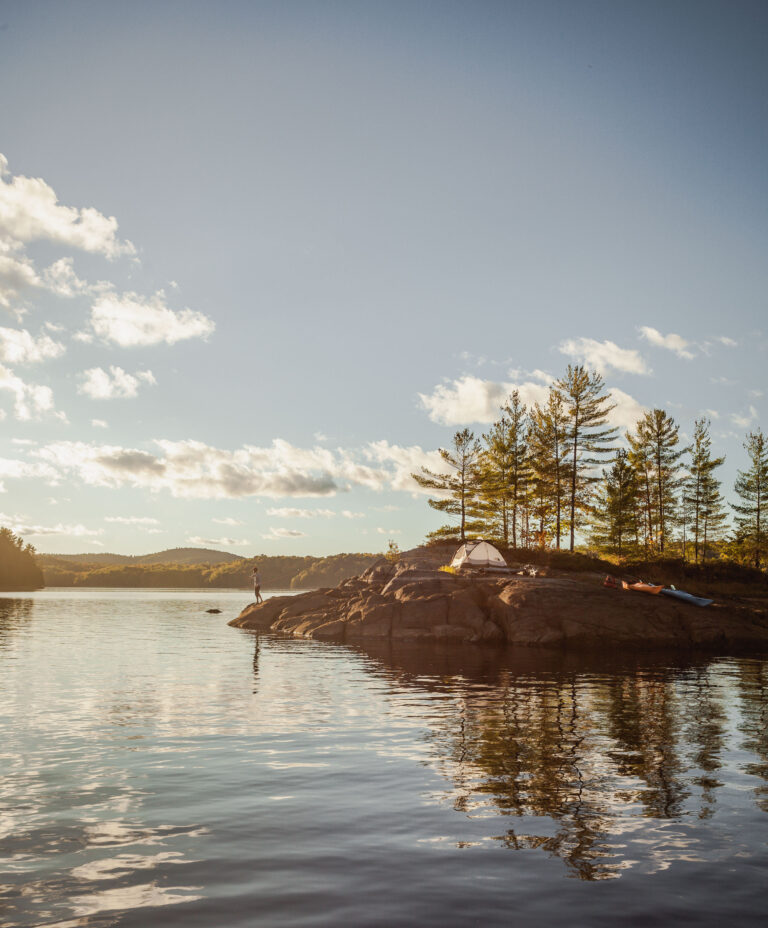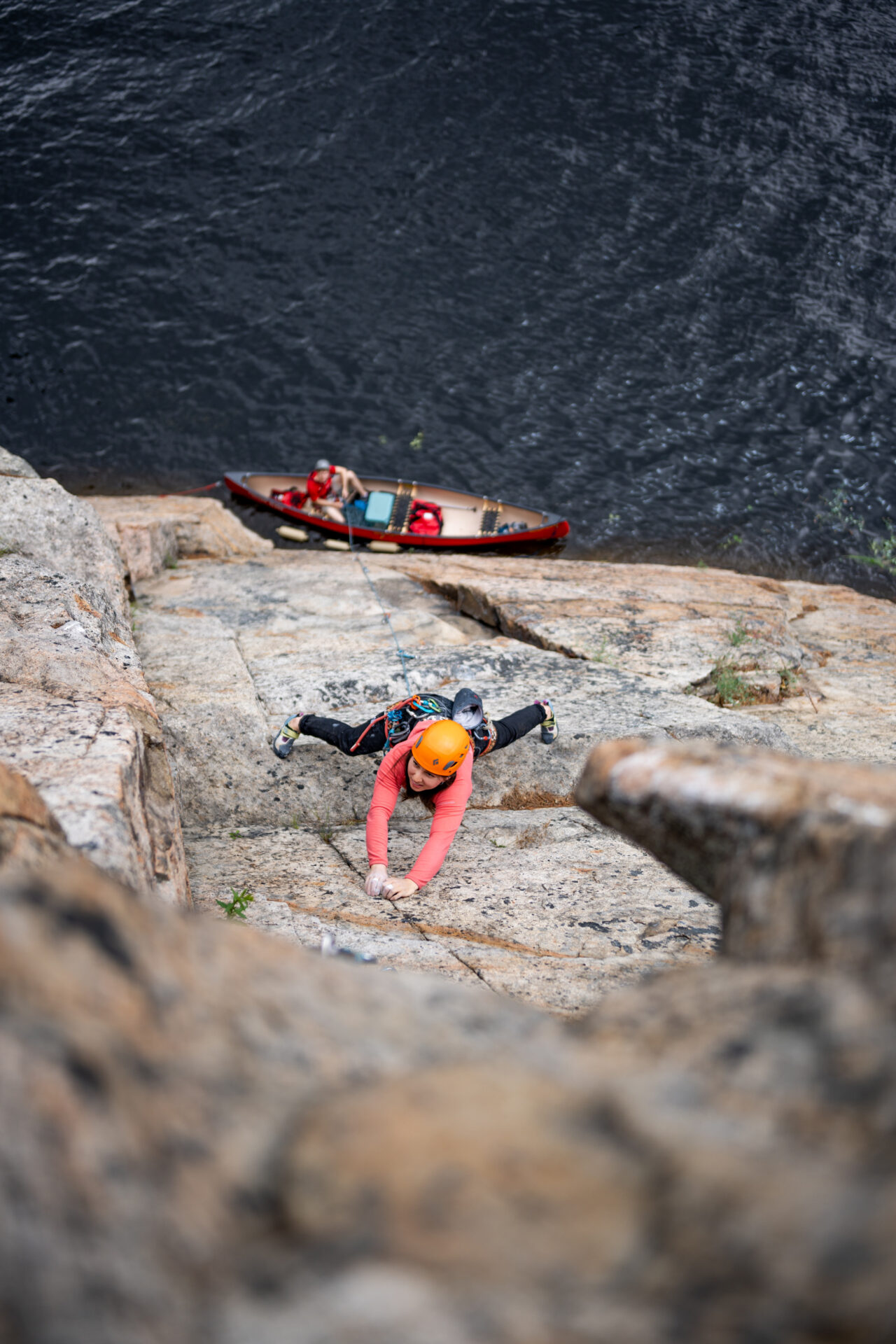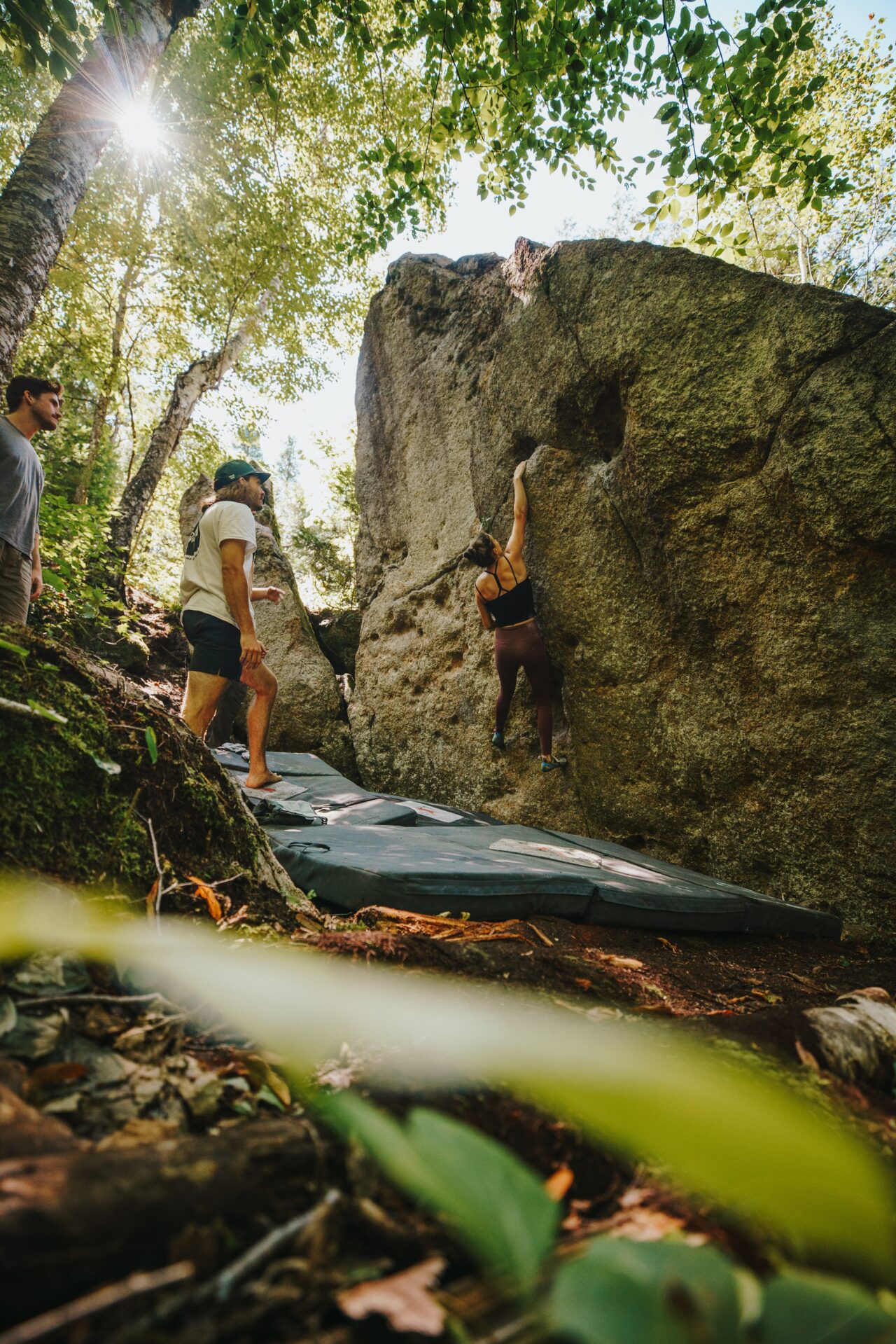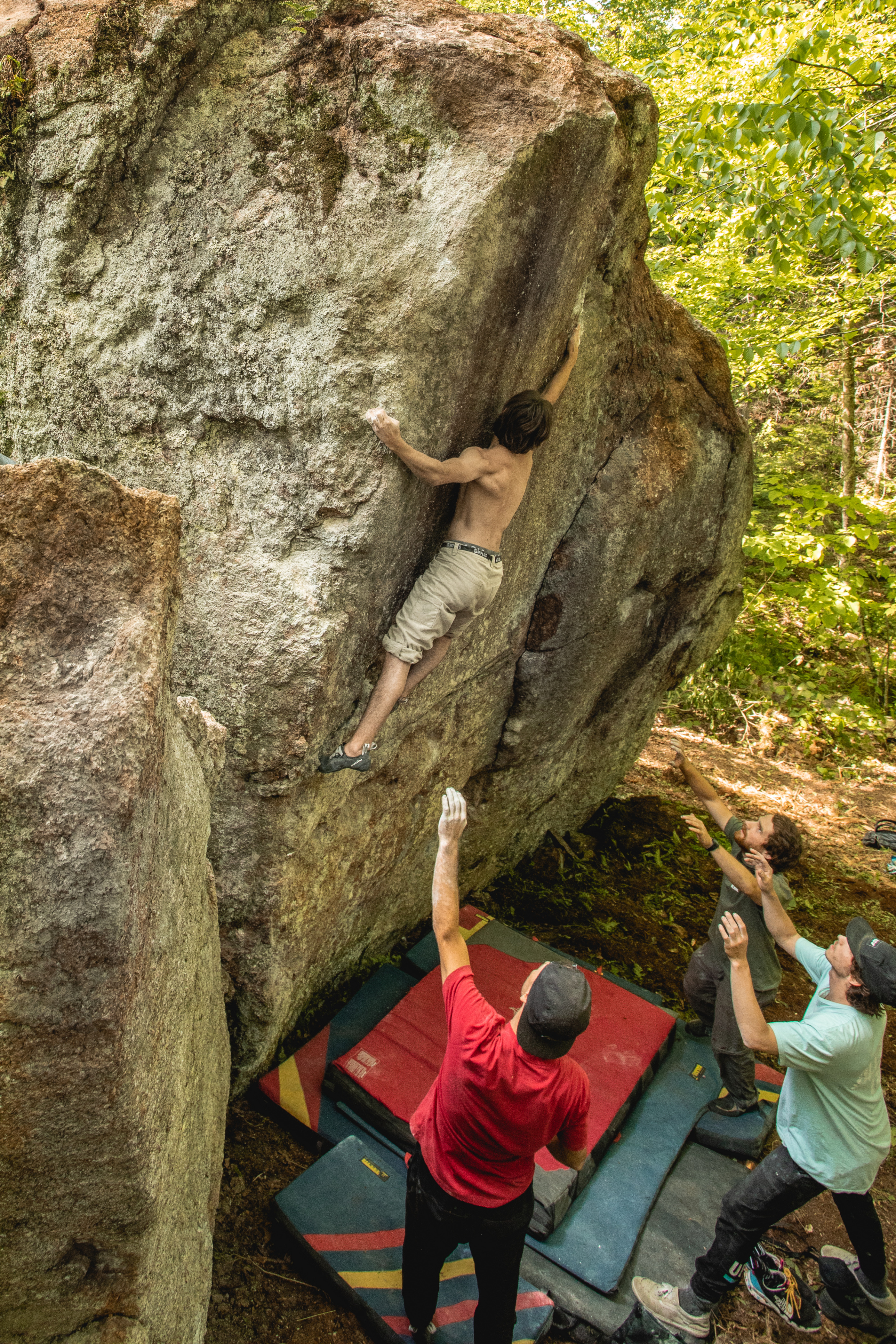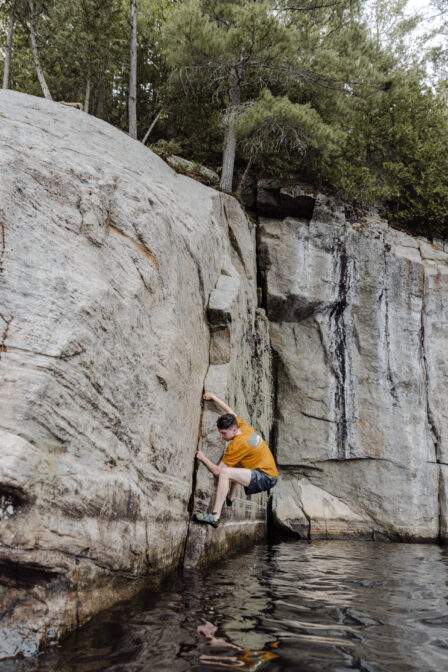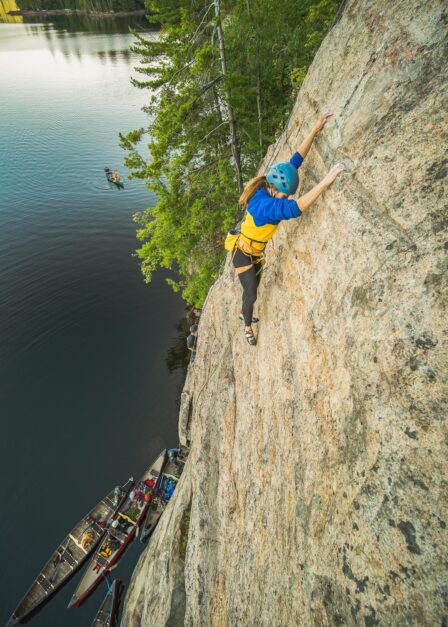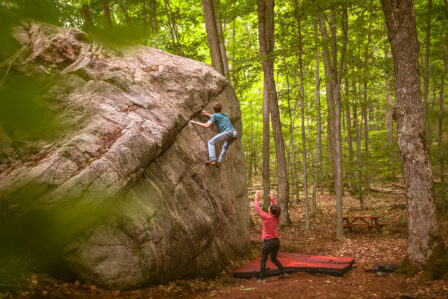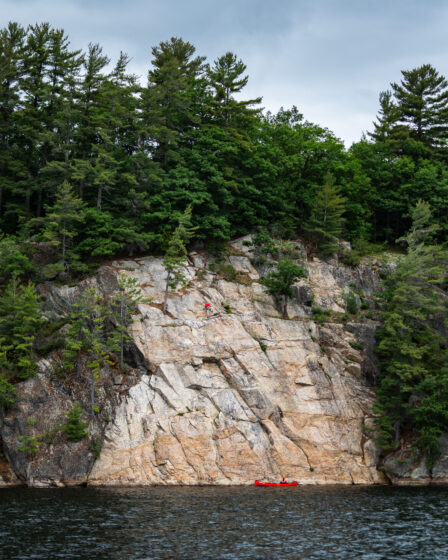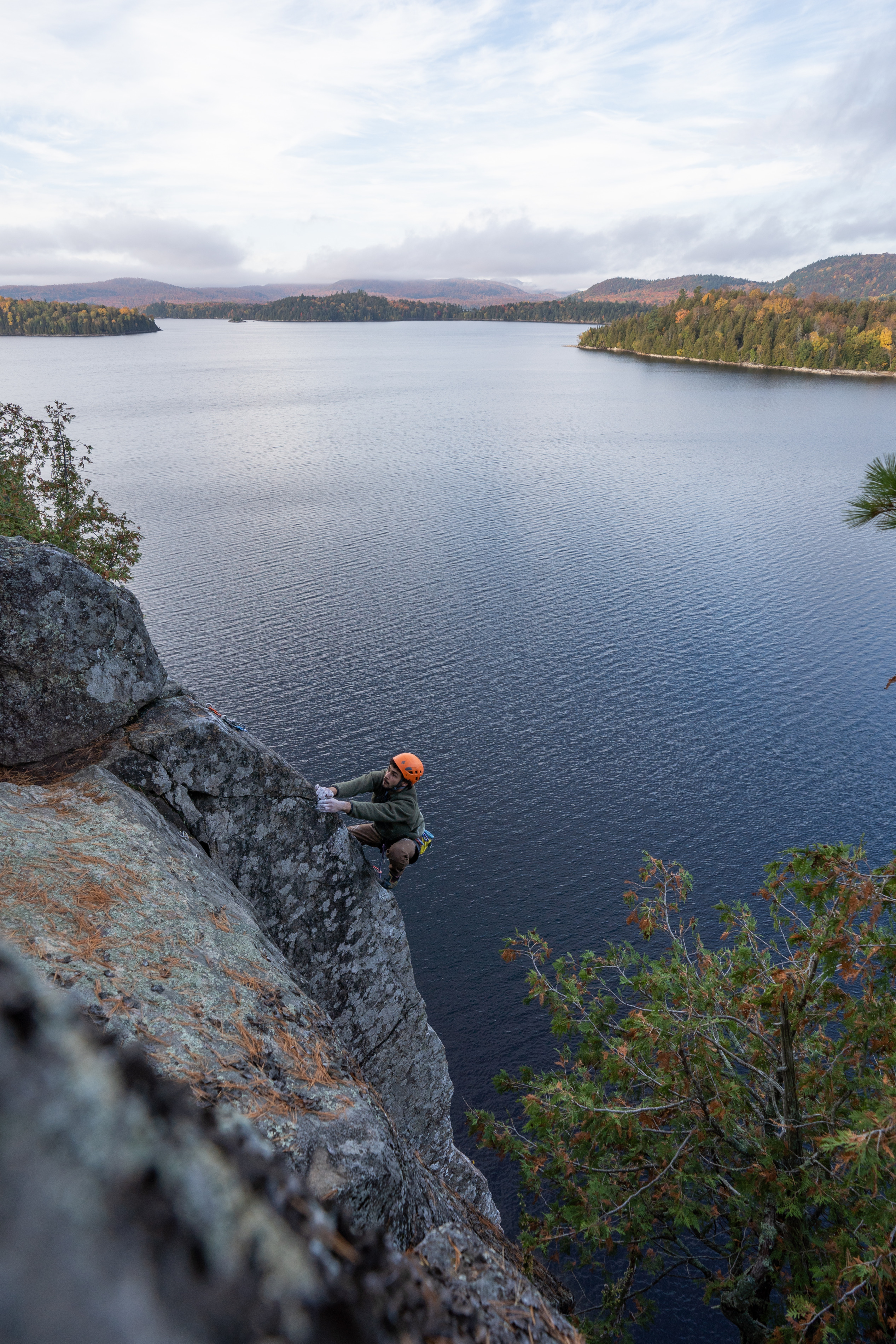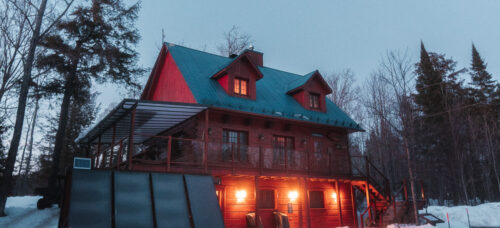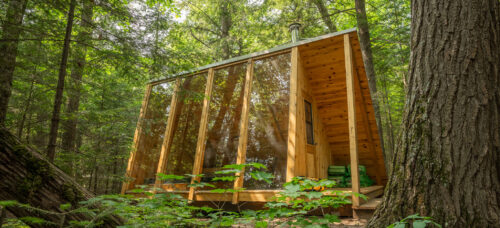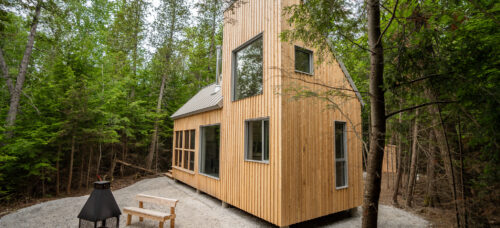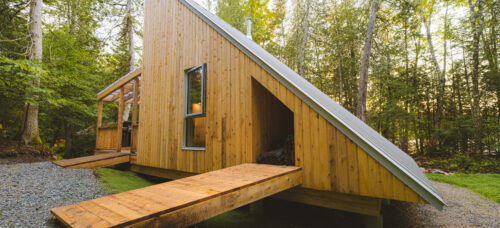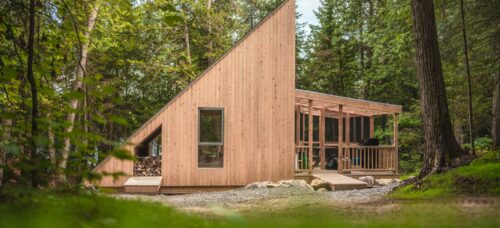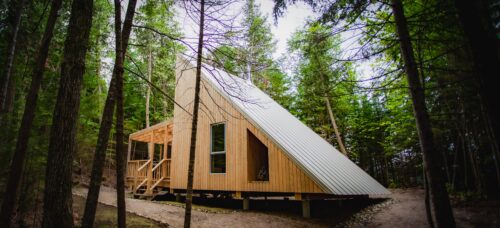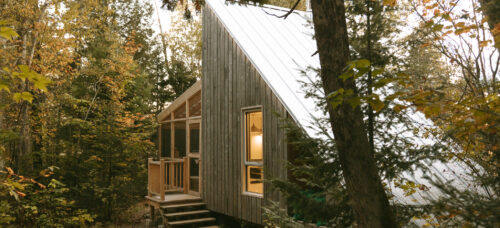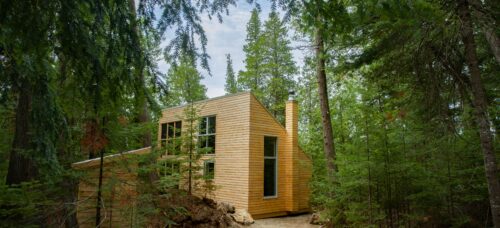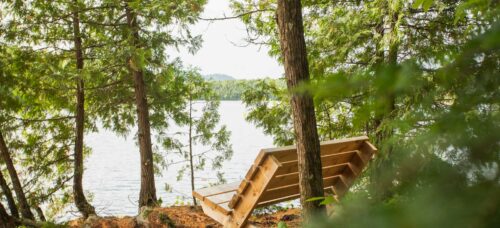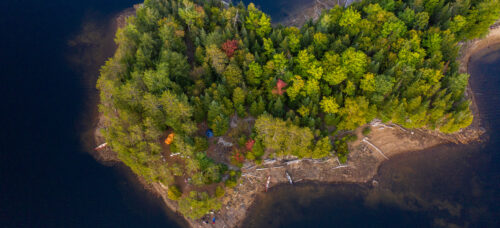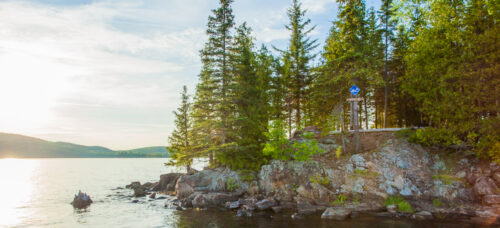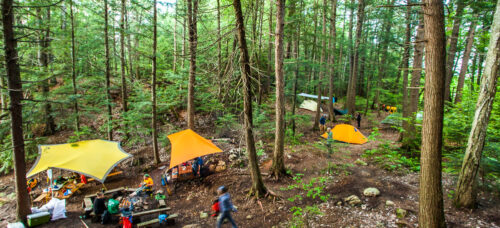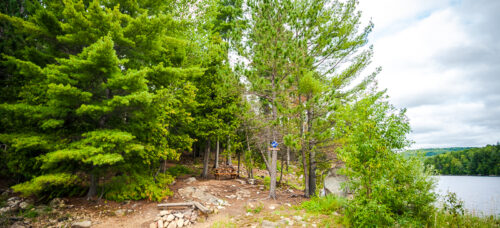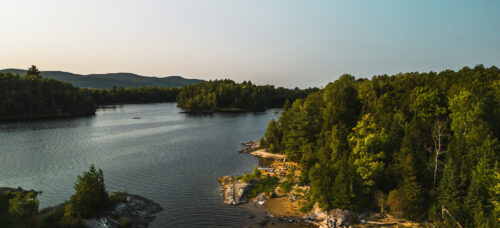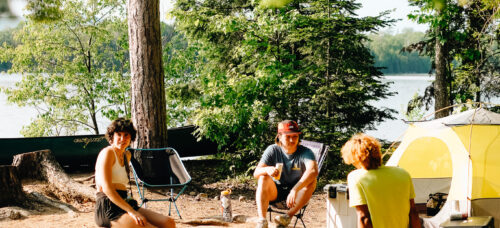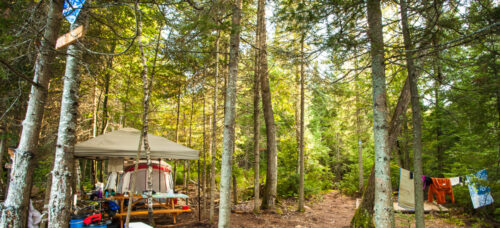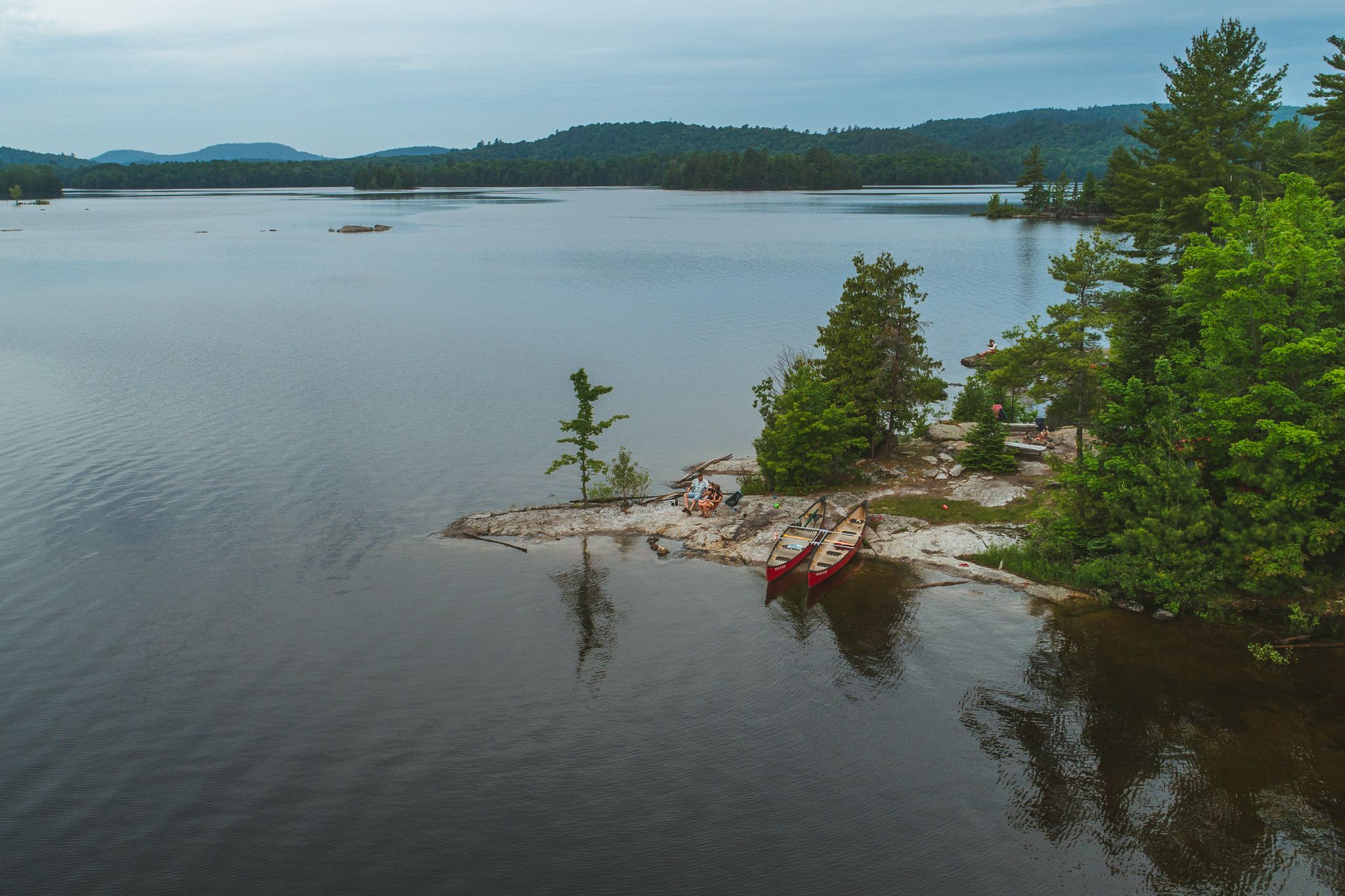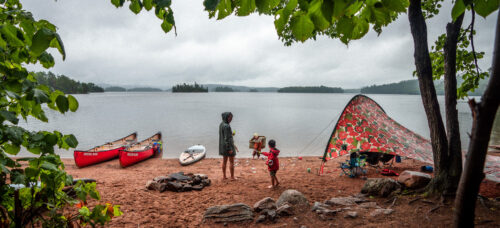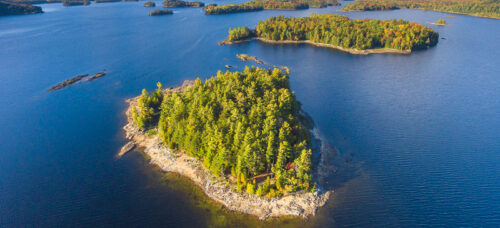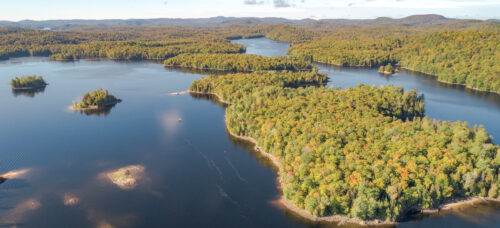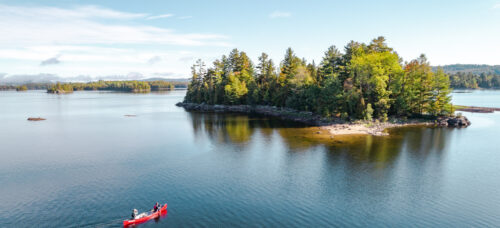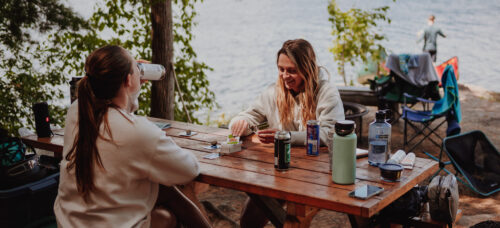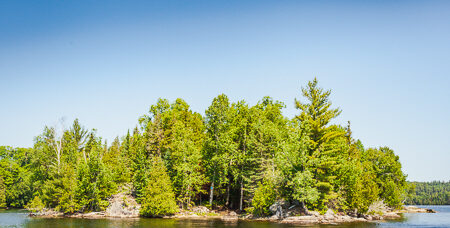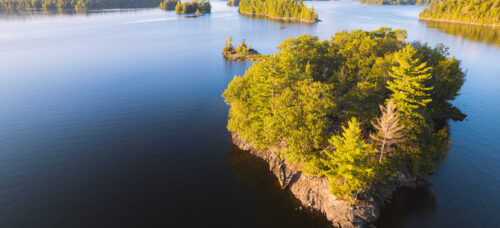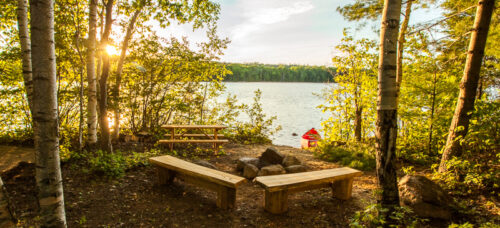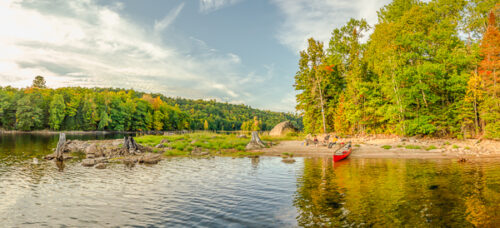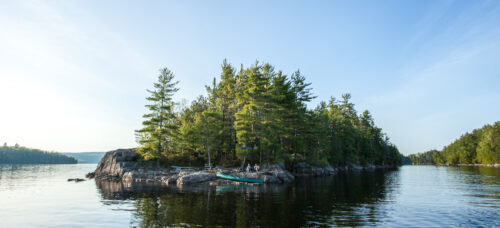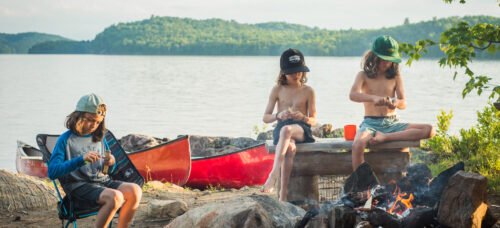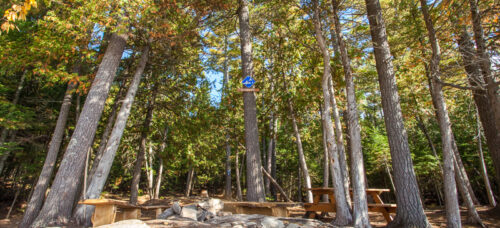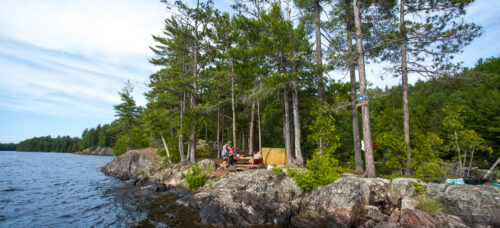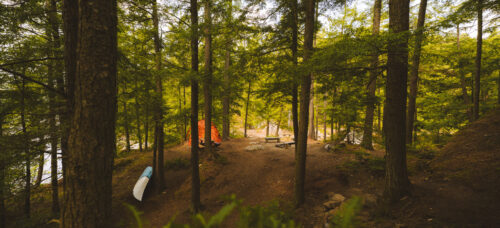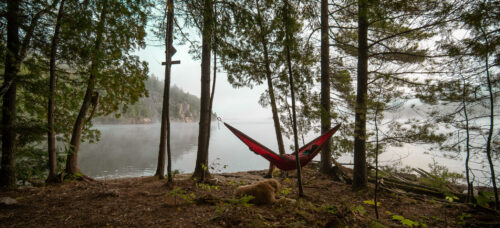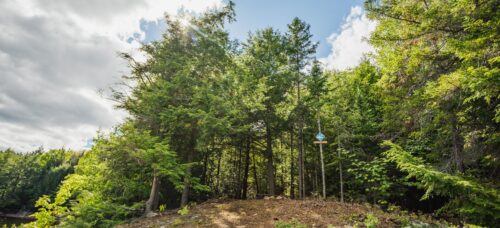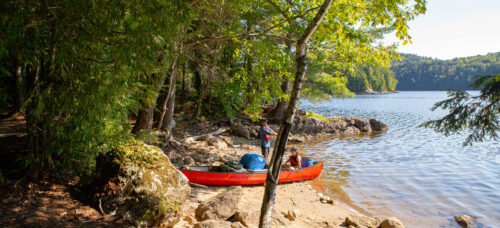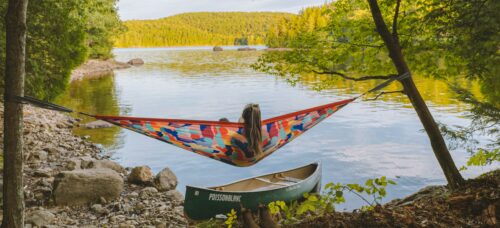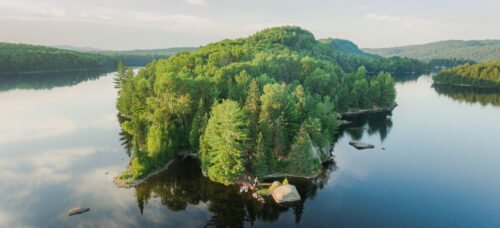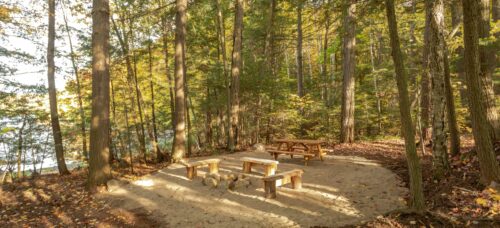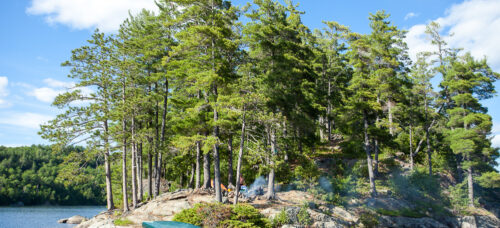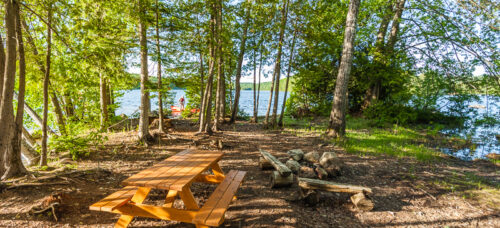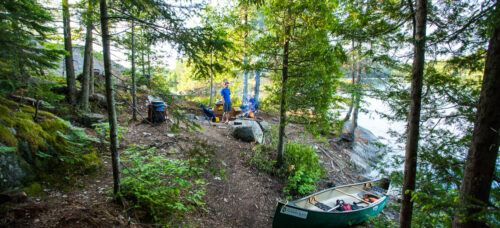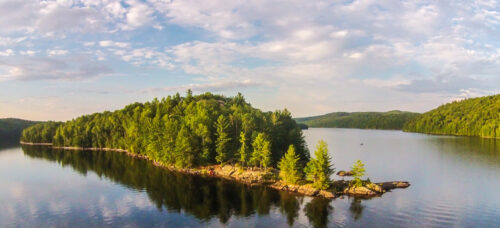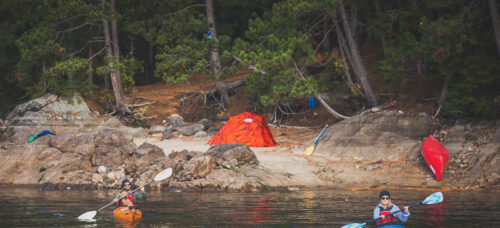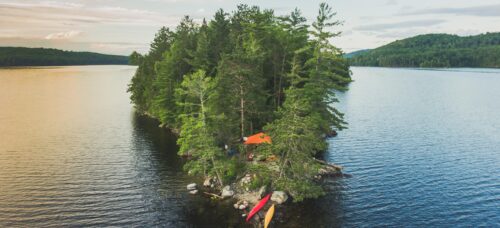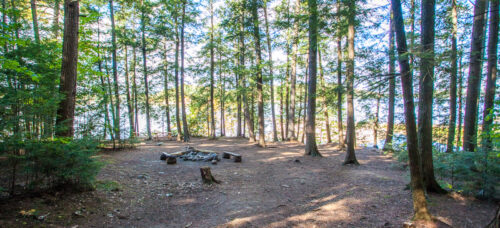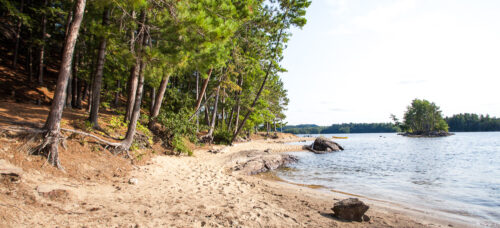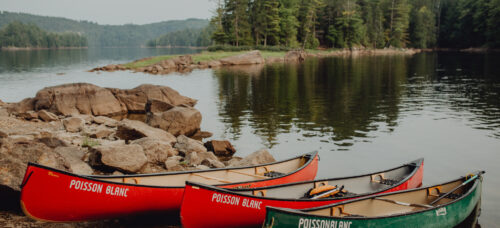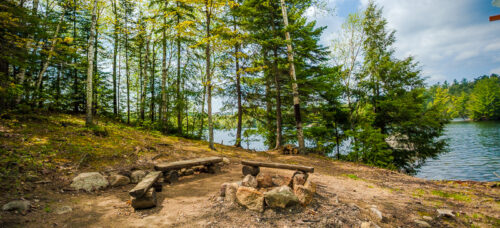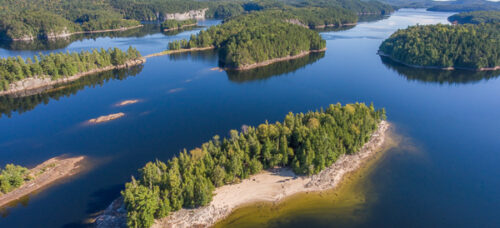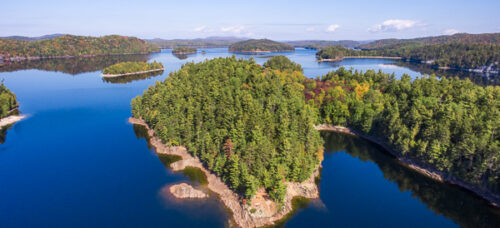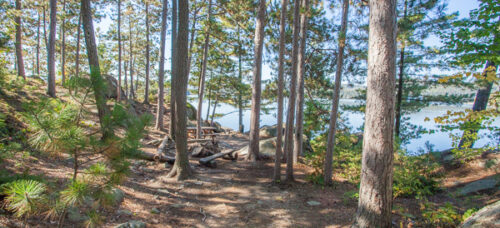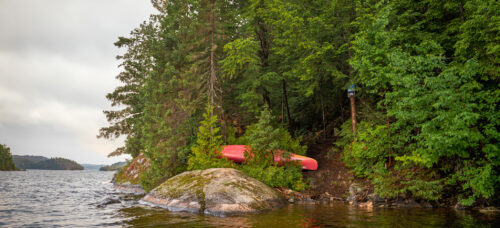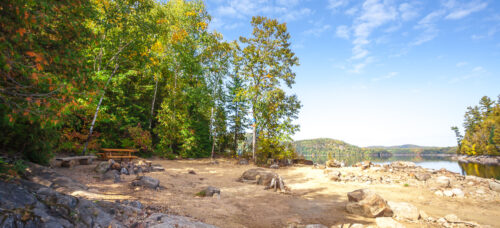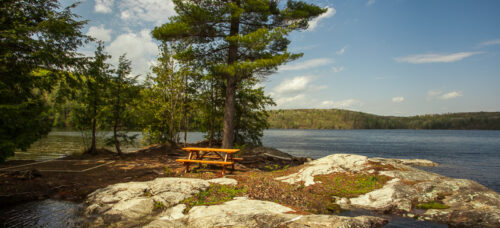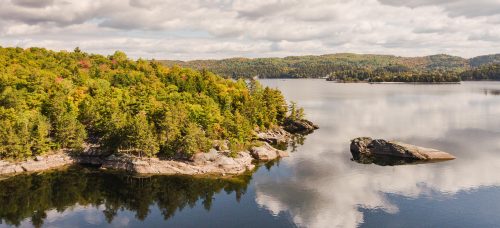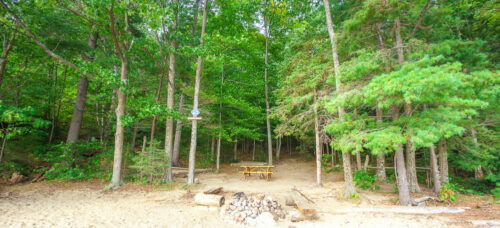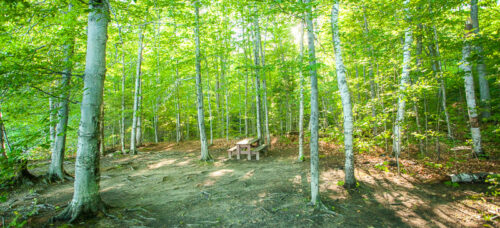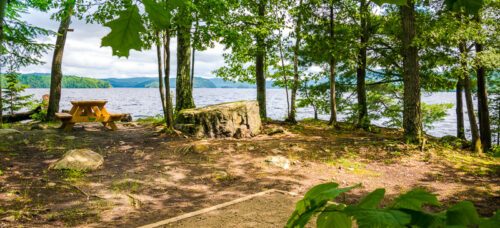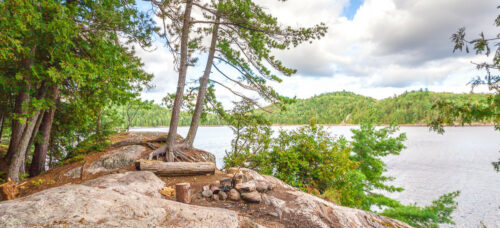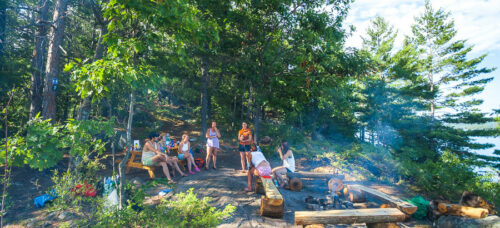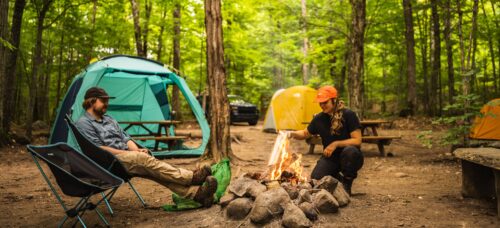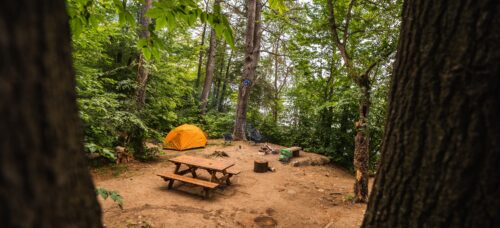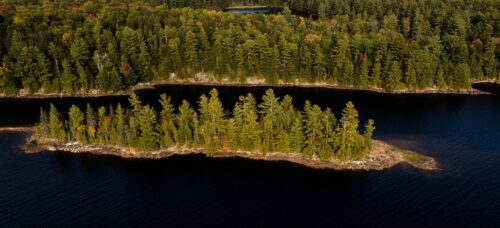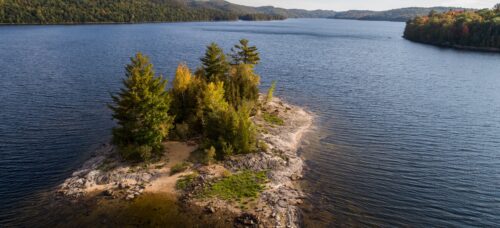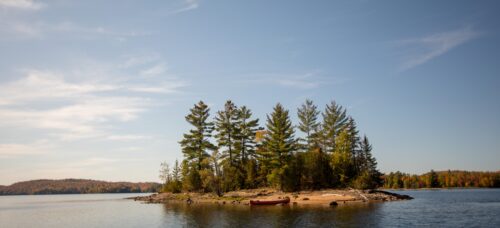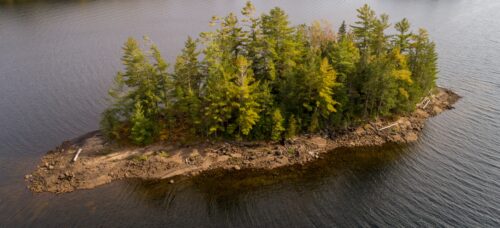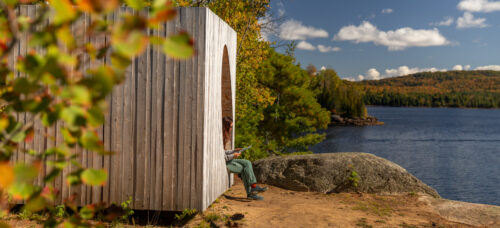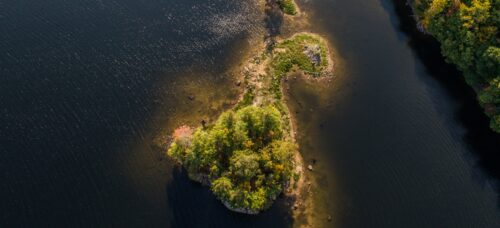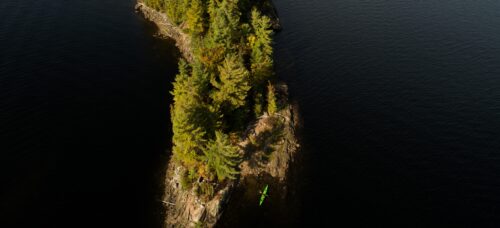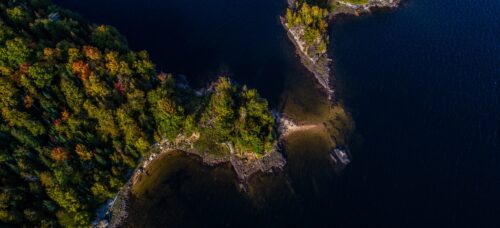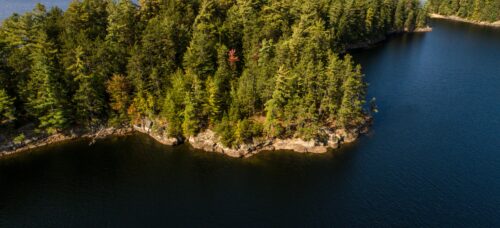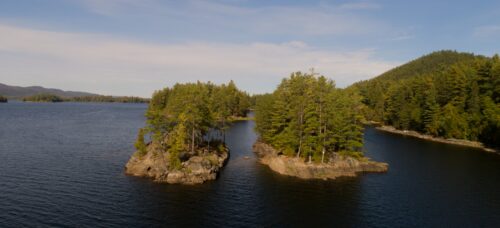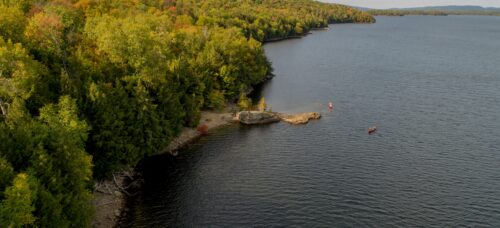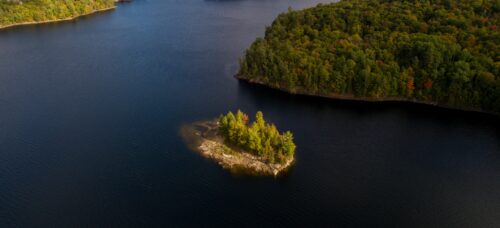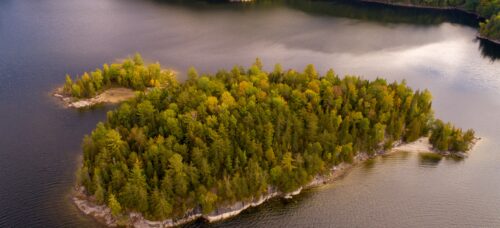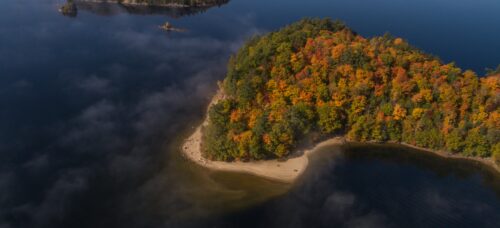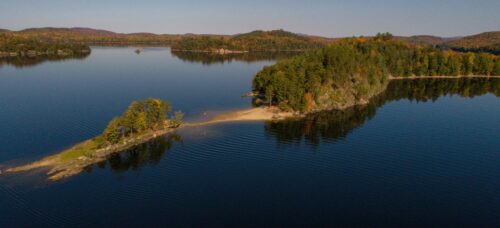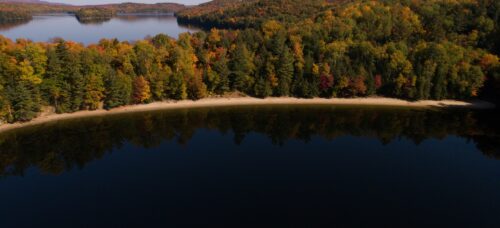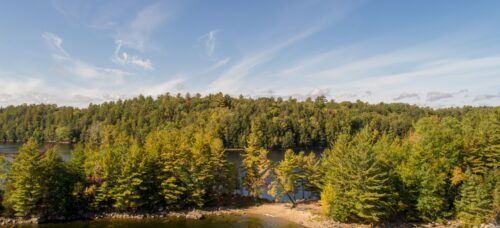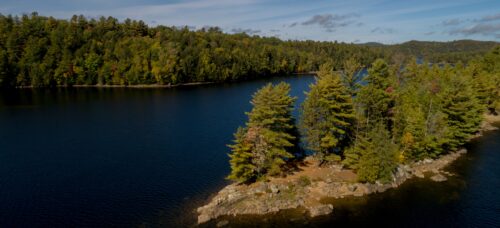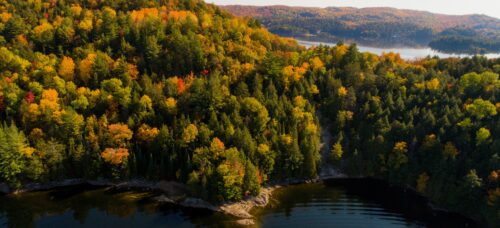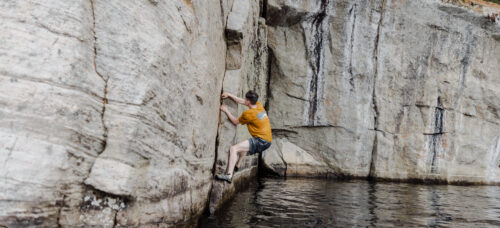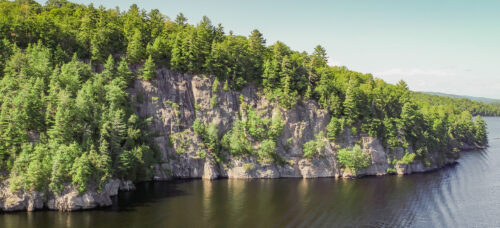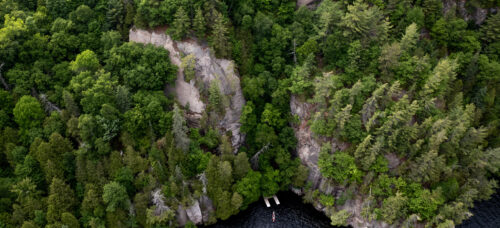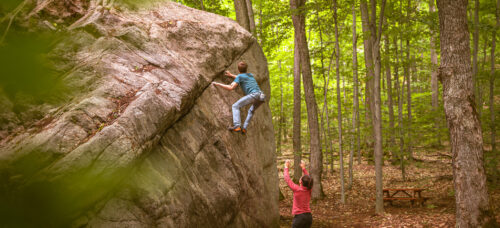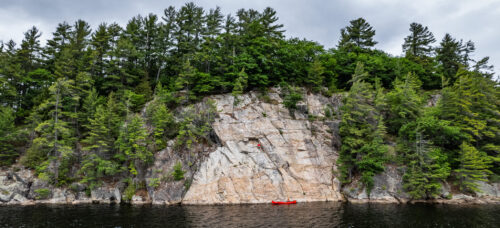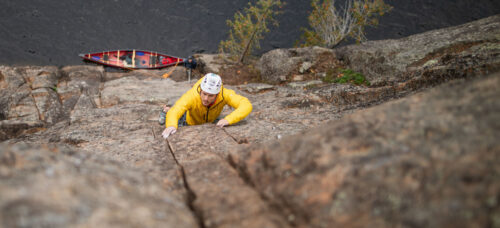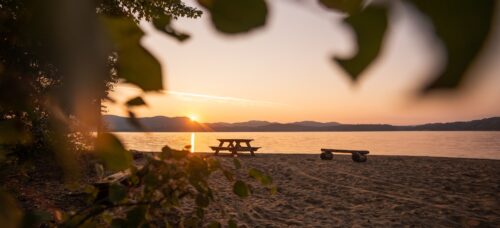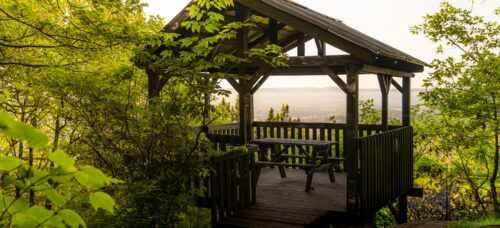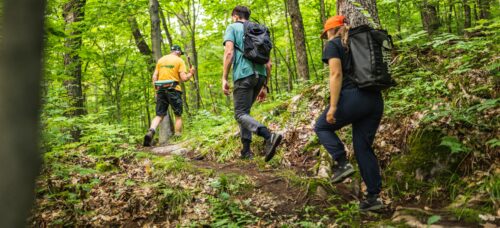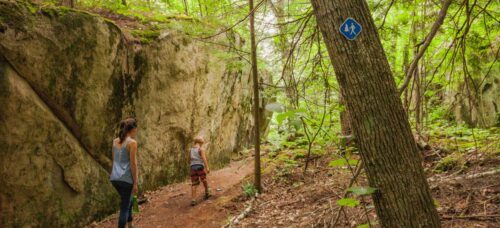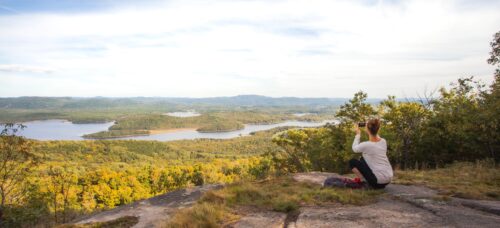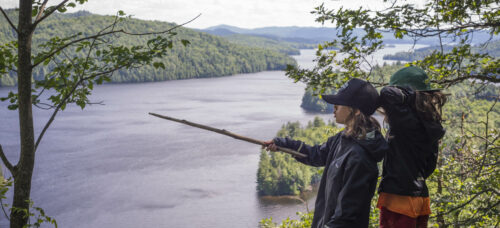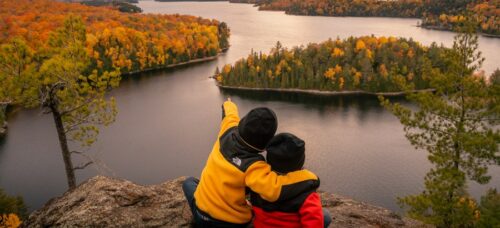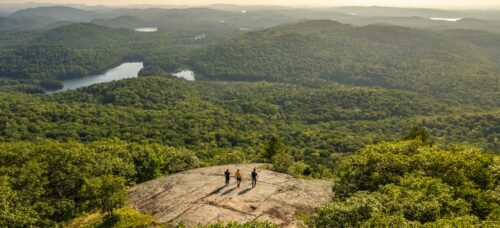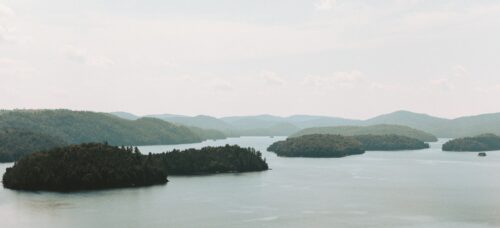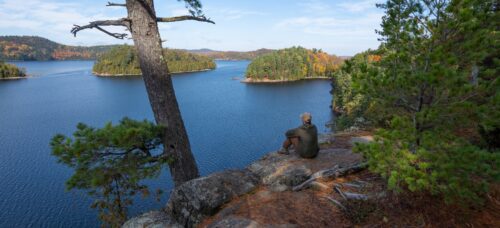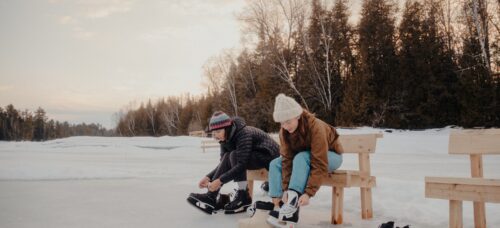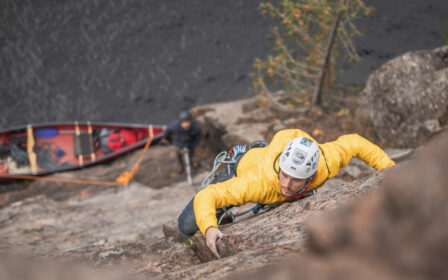
We Climb From our Canoe
(More Often Than Not!)
The Poisson Blanc Regional Park is a must-see destination for climbers looking for an out-of-the-ordinary climbing experience. Why out of the ordinary? Because each of our climbing sites is accessible only by watercraft. Most routes start in the water and are belayed from a canoe. The area offers an impressive variety of climbing styles: bouldering, deep water, top-roping, sport, trad, and multi-pitch.
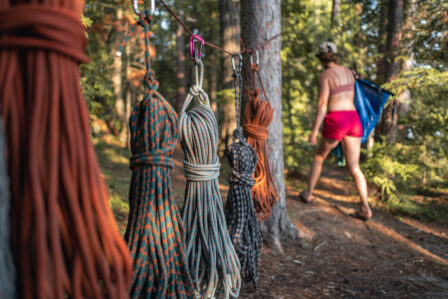
Three Distinct Climbing Experiences
- Climbing belayed from a canoe
- Climbing from dry land
- Bouldering and deep water solo
The climbing sectors are all surrounded by campsites located on islands or peninsulas. The classic formula is to rent a campsite close to one of these attractions and set up your base camp. Then you set off in your canoe for a climb, a bouldering session, or to enjoy the impressive rock walls that plunge into the reservoir’s deep waters or hide beneath the forest canopy.
Walls and Boulders
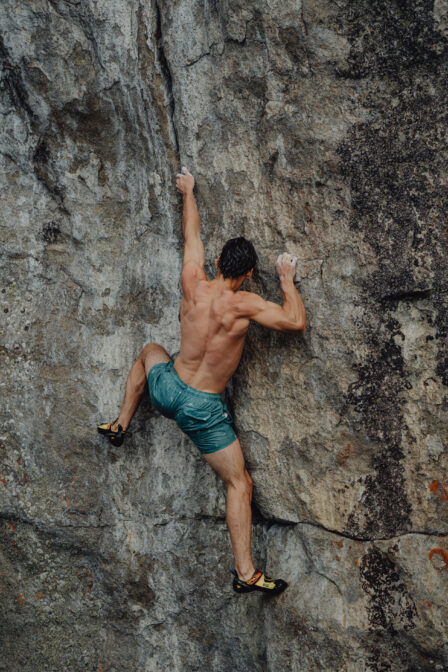
FQME Ratification and Volunteers
The Park’s climbing sites were developed in close collaboration with the Fédération québécoise de Montagne et d’Escalade (FQME). The Fédération’s developers have installed belays, anchors, and seals in accordance with the most rigorous standards in force. So, to climb at Poisson Blanc, you need to be a member of the FQME.
Climbing at Poisson Blanc is also possible thanks to the involvement of numerous volunteers, employees, and other climbing enthusiasts who hang in their harnesses for 4-5 hours, working on new projects.
Being a FQME Member
Means having access to a huge playground and promotional discounts with various partners. It also means insurance coverage for climbing and mountain skiing.
Guide – Rakkup Application
New since 2023: A mobile application that covers the entire Poisson Blanc climbing experience. All in one place! No more multiple printed pages that end up wet at the bottom of the canoe.
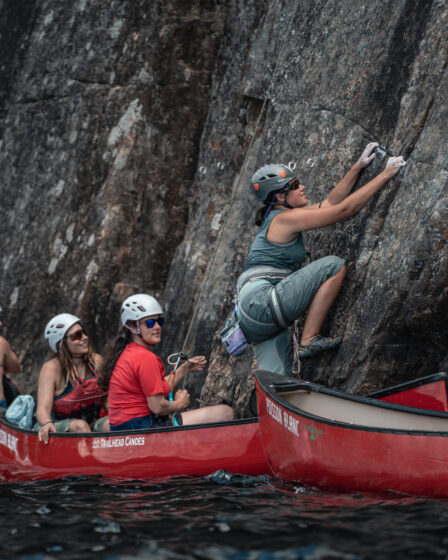
Who Can Go Climbing?
Here, we climb by day and talk about our routes at night around the campfire. Perfect for outdoor enthusiasts looking for their daily climbing fix. The key is to come climbing as a group with a variety of outdoor climbing skills. In this way, mutual support shines through and everyone lives the experience to the fullest. Mastering the techniques and having your own equipment (depending on the type of climbing) are essential for this activity. No climbing training is offered at Poisson Blanc for those who want to get started, and a minimum of canoe-camping experience is also required.
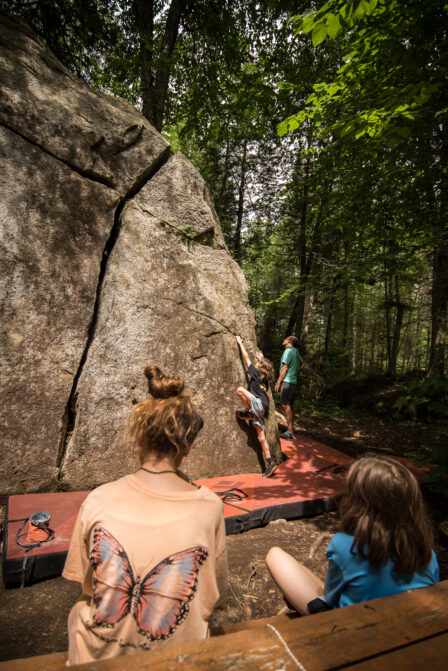
Climbing as a Family
For children, the minimum age for climbing is 5 years. Children under 16 must be accompanied by a qualified adult in possession of a climbing permit. To find out more about climbing with your family, read Ian Bergeron’s article.
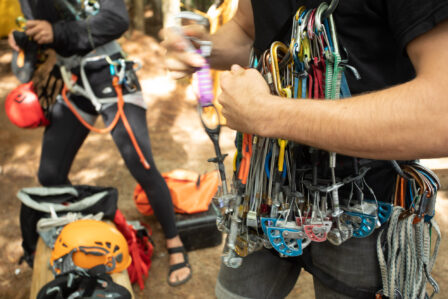
Équipement et matériel
Apportez votre propre équipement et matériel nécessaire aux types de grimpe que vous planifiez pratiquer lors de votre visite. En rafale, voici quelques items que vous pourriez avoir besoin : une corde dynamique (60m), un casque, des chaussons d’escalade, de la magnésie, des dégaines, des mousquetons, des coinceurs, des ancrages, un baudrier, etc.
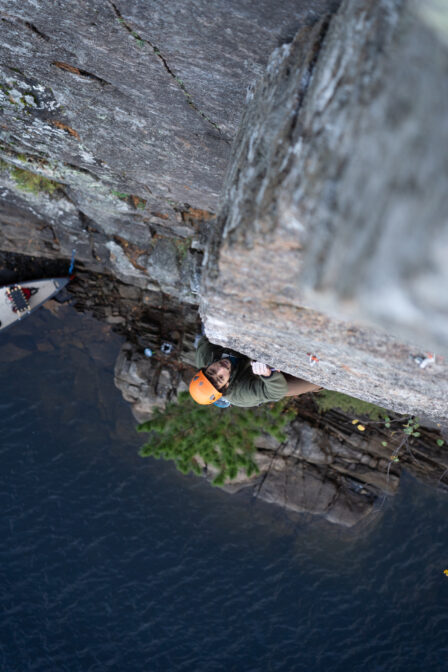
Climbing Ethics
- Choose routes that match your skills.
- Have adequate knowledge of outdoor climbing.
- Always use appropriate safety equipment that complies with FQME recommendations.
- Do not climb routes that are being worked on or those not indicated in the guide.
- Do not hang onto fragile trees and use fixed anchors.
- It is forbidden to carry out purges or modify existing equipment without the Park’s authorization. In the event of an anomaly, please inform us.
- Fasten the canoe at the foot of the wall and protect it against rubbing.
- Bring back your waste to keep the natural environment clean. Leave no trace practices are strongly recommended.
- Be cautious and pay attention to the weather. In the event of a storm, evacuate the wall and get to safety.
- Use nearby sanitary facilities for all your toilet needs.
Did You Know
The history of climbing at Poisson Blanc goes back a long way, but was poorly documented at the time. Some climbs date back to the 1980s. The first fixed equipment was installed on four routes by Guillaume Lajoie and Simon Trudeau in 2003. Since 2016, the Regional Park has been officially developing climbing in partnership with the FQME.

